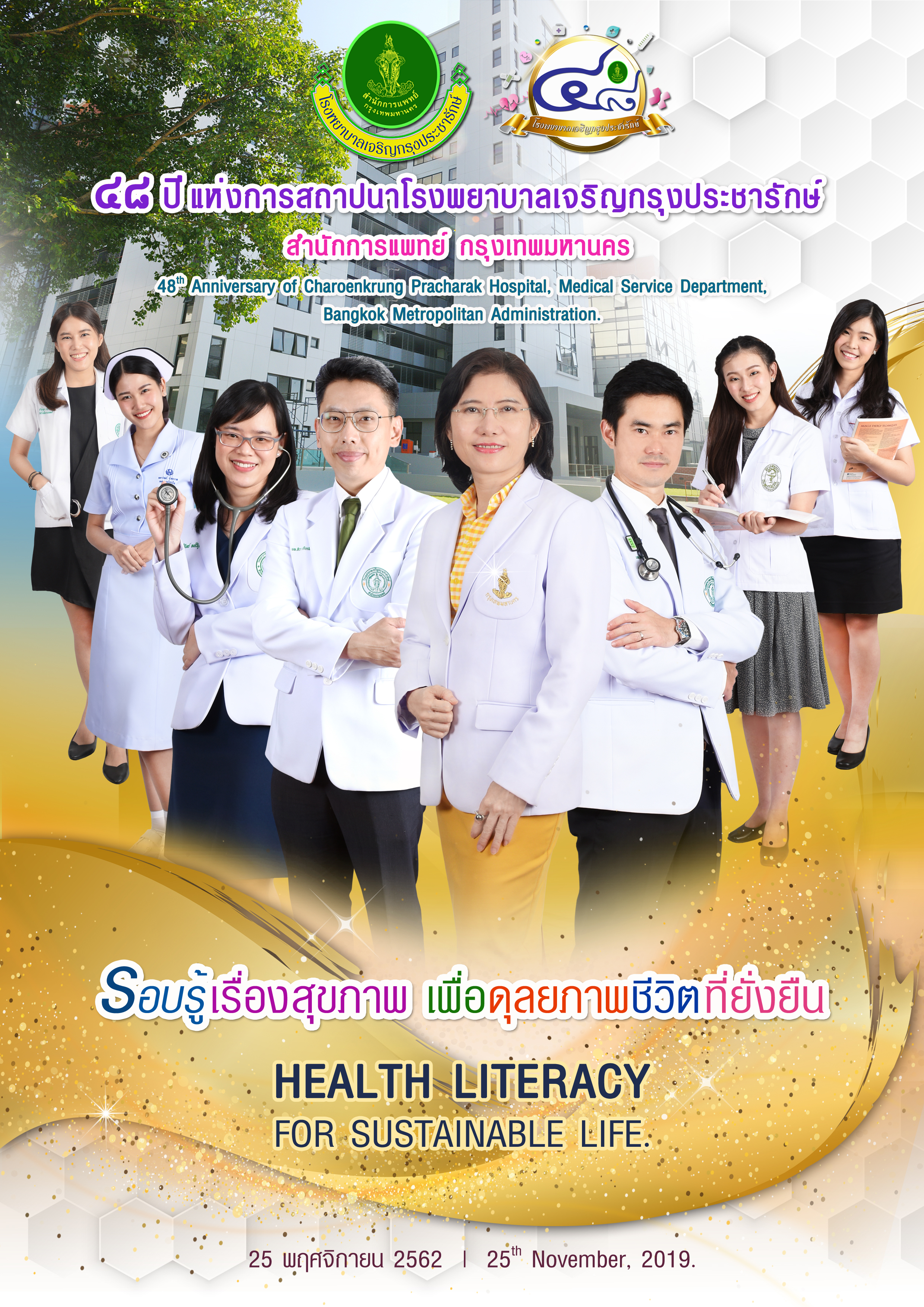การรับรู้เกี่ยวกับอาการเจ็บป่วย ผลกระทบที่ตามมา การควบคุมโรคส่วนบุคคลและการควบคุมโรคด้วยการรักษาในผู้สูงอายุโรคต่อมลูกหมากโต โรงพยาบาลหลวงพ่อทวีศักดิ์ ชุตินฺธโร อุทิศ
Main Article Content
บทคัดย่อ
วัตถุประสงค์การวิจัย: เพื่อศึกษาการรับรู้เกี่ยวกับอาการเจ็บป่วย ผลกระทบที่ตามมา รับรู้เกี่ยวกับการ
ควบคุมโรคส่วนบุคคล และการควบคุมโรคด้วยการรักษาในผู้สูงอายุโรคต่อมลูกหมากโต
วิธีการศึกษา: เก็บรวบรวมข้อมูลโดยการใช้แบบสอบถาม Illness Perception Questionnaire ด้านอาการ
เจ็บป่วย, ผลที่เกิดตามมา, การควบคุมโรคส่วนบุคคลและการควบคุมโรคด้วยการรักษา วิเคราะห์ข้อมูลด้วย
สถิติเชิงพรรณนา กลุ่มตัวอย่างเป็นผู้สูงอายุที่มีอายุ 60 ปีขึ้นไป ที่มารับการรักษาที่แผนกผู้ป่วยนอกและ
ได้รับการวินิจฉัยจากแพทย์ว่า เป็นโรคต่อมลูกหมากโต จำนวน 60 คน
ผลการศึกษา: กลุ่มตัวอย่างมีอายุเฉลี่ย 84.86 ปี ระยะเวลาที่ได้รับการวินิจฉัยโรคเฉลี่ย 6.11 ปี ร้อยละ 66.67
มีความรุนแรงของโรค (IPSS) ระดับน้อย ร้อยละ 44.44 มีการศึกษาสูงสุดในระดับประถมศึกษา ร้อยละ
61.90 ไม่ได้ประกอบอาชีพ ร้อยละ 63.49 ไม่เคยรู้จักบุคคลที่เป็นต่อมลูกหมากโต และร้อยละ 61.90 ยังดื่ม
เครื่องดื่มที่มีแอลกอฮอล์และคาเฟอีน ประเมินการรับรู้เกี่ยวกับการเจ็บป่วยพบว่า ส่วนมาก (ร้อยละ 80.95)
มีการรับรู้เกี่ยวกับอาการเจ็บป่วยอยู่ในระดับสูง ร้อยละ 52.38 รับรู้ผลกระทบที่ตามมาอยู่ในระดับปานกลาง
การรับรู้การควบคุมโรคส่วนบุคคลและการควบคุมโรคด้วยการรักษาในระดับสูง ร้อยละ 71.43 และร้อยละ
74.60 ตามลำดับ
สรุป: การรับรู้เกี่ยวกับการเจ็บป่วยของบุคคลมีความแตกต่างกันตามระดับของความสามารถในการรับรู้
หากบุคคลมีการรับรู้เกี่ยวกับการเจ็บป่วยที่ดีและถูกต้องอาจทำให้มีการปฏิบัติตัวที่ถูกต้องได้
คำสำคัญ: การรับรู้การเจ็บป่วย โรคต่อมลูกหมากโต ผู้สูงอายุ
Article Details
เอกสารอ้างอิง
http://www.dop.go.th/th/know/1/159.
2. Pietrzyk B, Glinianowicz MO, Owczarek A, Gabryelewicz T, Rachtan AA, Prajsner A, et al.
Depressive symptoms in patients diagnosed with benign prostatic hyperplasia. Int Urol Nephrol 2015;
47: 431-40.
3. Lim KB. Epidermiology of clinical benign prostatic hyperplasia. Asian J Urol 2017; 4(3): 148-51.
4. Bureau of Policy and Strategy. Public health statistics [Internet]. 2015[cited 2019 May 3]. Available from http://bps.moph.go.th/new_bps/sites/default/files/health_statistic2558.pdf.
5. Tanagho EA, McAninch JW. Smith's general urology 12thed. East Norwalk CT: Appleton & Lange; 1988.
6. Bruskewitz RC. Quality of life and sexual function in patients with benign prostatic hyperplasia. Reviews in urology 2003; 5(2): 72-80.
7. Harry C. Benign prostatic hyperplasia. Am J Med Sci 1997; 314(4): 239-44.
8. McNicholas T, Swallow D. Benign prostatic hyperplasia. Surgery (oxford) 2011; 29(6): 282-86.
9. Leventhal H, Yu J, Leventhal E. International encyclopedia of the social & behavioral sciences. Illness behavior and care-Seeking 2015; 596-602.
10. Leventhal H, Meyer D, Nerenz DR. The common sense representation of illness danger. Medical Psychology 1980; 11: 17-30.
11. Klinklom S, Panuthai S, Nanasilp P. Self-management behaviors and related factors among older persons with benign prostatic hyperplasia. Nursing Journal 2017; 44(3): 52-64.
12. Cochran WG. Sampling techniques. 3rded. New York: John Wiley & Sons; 1977.
13. Moss-Morris R, Weinman J, Petrie K, Horne R, Cameron LD, Buick D. The revised illness perception questionnaire (IPQ-R). Psychol Health 2002; 17: 1-16.
14. Bijsterbosch J, Scharloo M, Visser AW, Watt I, Meulenbelt I, Huizinga TW, et al. Illness perceptions in patients with osteoarthritis: change over time and association with disability. Arthritis Rheum 2009; 61(8): 1054-61.
15. Aldo EC, Giovanni B, Rosita AC, Rossella C, Sandro LV. Epidemiology and risk factors of lower urinary tract symptoms/benign prostatic hyperplasia and erectile dysfunction. The Aging Male 2019; 22(1): 12-9.
16. Katavic SS, Tanackovic SF, Badurina B. Illness perception and information behavior of patients with rare chronic diseases. Information Research: An International Electronic Journal 2016; 21(1): n1.
17. Majoor B, Andela CD, Quispel CR, Rotman M, Dijkstra P, Hamdy N, et al. Illness perceptions are associated with quality of life in patients with fibrous dysplasia. Calcified tissue international 2018; 102(1): 23-31.


